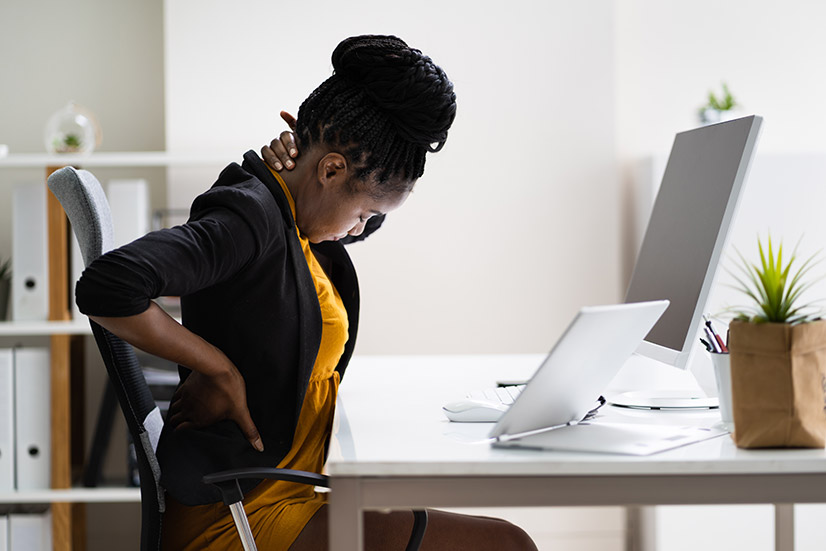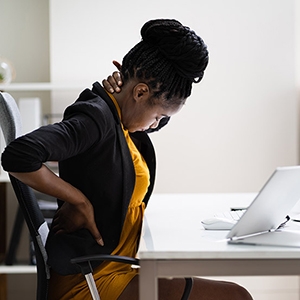
As an OT and hand therapist, I have assessed both traumatic and non-traumatic injuries of the fingers, hand, wrist, forearm and upper arm. Some of these injuries may occur at work and this naturally lead me to explore the topic of ergonomics. My intention is to eventually become a Certified Ergonomic Assessment Specialist.
The muscles of the body should act as a whole for maximum functional performance and safety. Therefore, setting up a proper ergonomics workstation helps to prevent poor posture. Poor posture can decrease your range of motion, create strains on muscles and tendons, joints, and compress nerves; leading to peripheral nerve deficits, overcompensation, muscle tightness and pain over time. Muscle weakness, lack of sensation and joint instability can negatively affect your ability to perform functional tasks outside of work, such as house chores, meal preparation, and leisure.
Signs of poor posture may include the following; forward head, rounded shoulders, upper neck, shoulder, and forearm muscle tightness.
Specific risks may include sustained pressure at the elbow against the table/desk’s edge which can compress the ulnar nerve and cause abnormal sensation (numbness, tingling) to the ½ palmar and dorsal aspect of the ring and entire small finger. Meanwhile, sustained pressure at the wrist could compress the median nerve and cause abnormal sensation to the palmar thumb, index, middle and ½ of the ring finger.
Overall, a PT or OT’s education in anatomy, physiology, and biomechanics can benefit patients and employers to have an ergonomic assessment and make any necessary ergonomic changes to prevent injuries, increase comfort, productivity, and mostly safety.
Below are list of ergonomic tips:
Ergonomics
- Assess your computer monitor/laptop, keyboard, mouse, desk and seat set up.
- Table at about elbow level.
- Seat has back support that conforms to your lower back, and weight shift your lower extremity to decrease occurrence of legs falling asleep.
- Seat height allows your elbows to be at table height.
- Using core strength, sit straight up.
- The top of the screen is at eye level: Use a monitor or laptop stand to prop the top of the screen to eye level.
- For every 20 minutes that you are looking on screen, take 20 seconds to look off the screen to an object that is 20 feet away from your seat to prevent eye strain.
- Reduce glare by adjusting window blinds or use a screen filter.
- Keyboard pad should be within reach with both upper arms resting by the side of body, elbows flexed and hands hovering over the keyboard and mouse.
- Control the mouse using movements of the shoulder, elbow and wrist to prevent any isolated repetitive movement of wrist.
- Increase awareness of how long your palms are resting and compressed against the hard computer desk.
- Place your feet flat on the floor.
Nathan Nguyen, MOTR/L
Occupational Therapist






